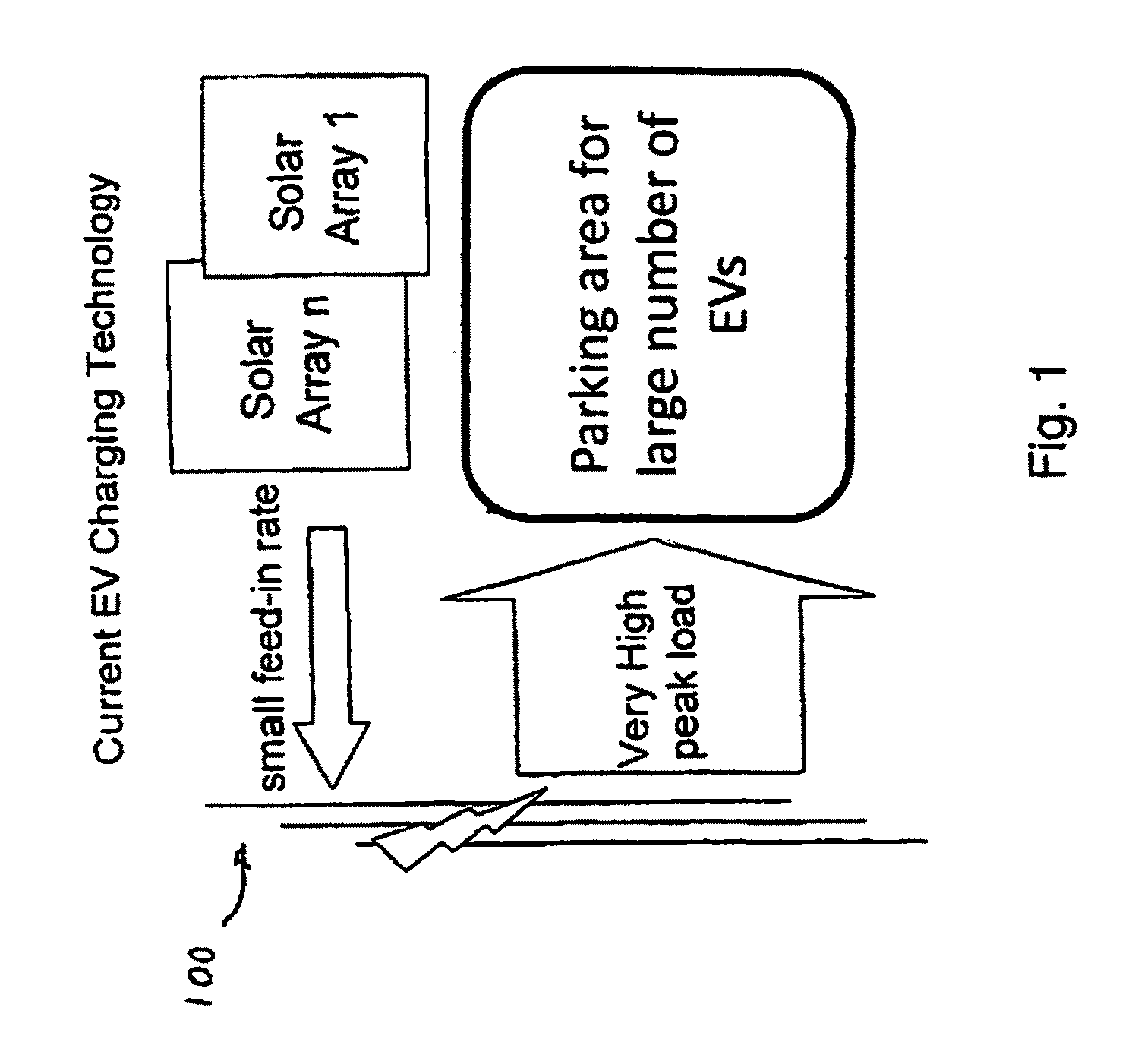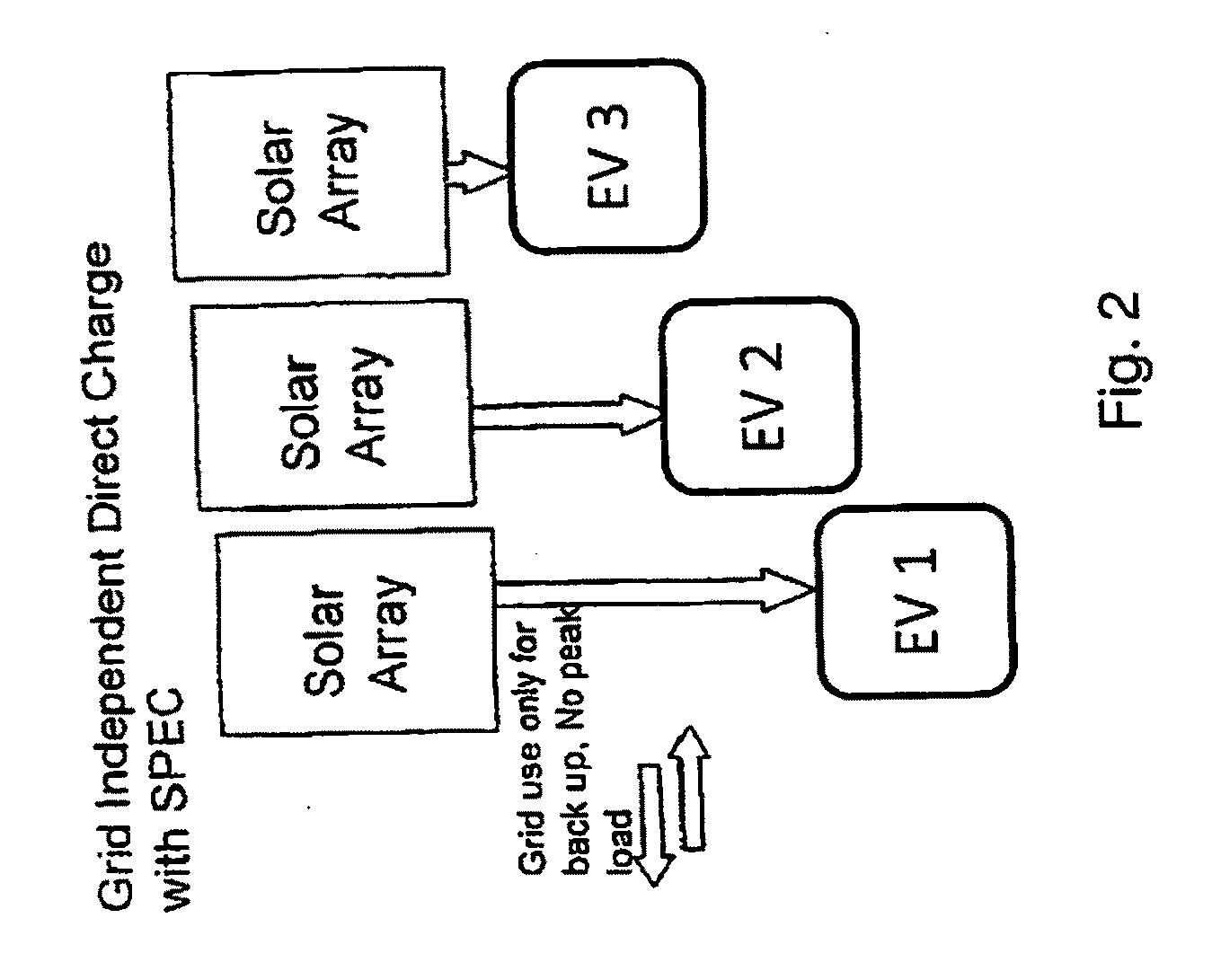Solar powered, grid independent EV charging system
a charging system and solar energy technology, applied in the direction of electric energy management, battery arrangement, climate sustainability, etc., can solve the problems of increasing the cost per kilowatt-hour that a consumer must pay for electricity, affecting the power grid severely, and recharging batteries, so as to facilitate the full environmental benefit of ev technology and address storage issues
- Summary
- Abstract
- Description
- Claims
- Application Information
AI Technical Summary
Benefits of technology
Problems solved by technology
Method used
Image
Examples
Embodiment Construction
[0028]Referring to FIG. 1, in a conventional EV charging system, solar power and DC power for EV charging are decoupled. Solar power from a plurality of solar arrays, solar array 1 through solar array n, is connected to the grid 100 as shown, converted back to AC and electrically coupled to the grid with a typically small feed in rate as shown. The AC grid power then must be converted back to DC for charging the EV. This is done generally while commuters are at work, and results in a very high peak load needed for a quick charge of EV batteries. This load occurs during peak demand hours and thus will be prohibitive for a large number of EVs.
[0029]Referring to FIG. 2, in accordance with an aspect of the invention, a plurality of solar arrays are provided for charging EVs directly without conversion to AC, and without being coupled to the grid. Since grid decoupling is complete, the present system is independent of the peak demand hours for the grid, and is suitable for charging a lar...
PUM
| Property | Measurement | Unit |
|---|---|---|
| energy | aaaaa | aaaaa |
| output voltage | aaaaa | aaaaa |
| charging voltage | aaaaa | aaaaa |
Abstract
Description
Claims
Application Information
 Login to View More
Login to View More - R&D
- Intellectual Property
- Life Sciences
- Materials
- Tech Scout
- Unparalleled Data Quality
- Higher Quality Content
- 60% Fewer Hallucinations
Browse by: Latest US Patents, China's latest patents, Technical Efficacy Thesaurus, Application Domain, Technology Topic, Popular Technical Reports.
© 2025 PatSnap. All rights reserved.Legal|Privacy policy|Modern Slavery Act Transparency Statement|Sitemap|About US| Contact US: help@patsnap.com



